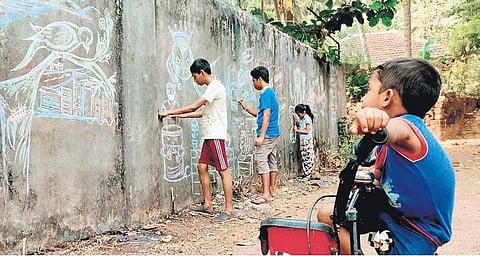

Kasaragod district – which at one point had the highest number of COVID-19 patients in the country – became COVID-19 free, with a stunning 100% recovery rate. The last of its 178 patients walked out of the COVID-19 Care Centre (CCC) at Kasaragod Medical College building Sunday evening. The CCC was set up in four days. Many such decisions made the difficult task possible for a district that does not even have a medical college. The district, with no previous experience of a pandemic, learned on the go.
Key decisions that helped turnaround the rising graph of COVID-19 cases
January 30: First COVID-19 case reported in Kerala, in Thrissur. The patient arrived from Wuhan
January 31: A medical student who also arrived from Wuhan admitted to Kasaragod District Hospital with symptoms
February 3: Patient tested positive, the third case in state.
February 16: The first patient recovers.
March 5: Arogya Jagratha Samithi was formed in every ward, with ward member as the chairperson and junior health inspector and accredited social health activist (ASHA) as members. It was responsible for grassroots surveillance and monitoring of isolated patients.
March 14: Minister-in-charge of district E Chandrasekharan adds police to the committee, renames it as Jana Jagratha Samithi. Apart from surveillance and monitoring of suspects, it is tasked with creating awareness on social distancing and ‘break the chain’ campaign, discourage gatherings at public places and places of worship.
March 16: A month after the first patient recovered, the district gets the second case. The patient was from Naif in Dubai.
March 18: The control room collates data on shops providing and selling essential services and items so that passes can be issued to them in the event of a lockdown.
March 19: The third case reported. He too is from Naif in Dubai. It gave a scare to the district, as the patient flouted quarantine rules and mingled with many.
March 20: Collector asks all who returned from Naif to report at PHC, and give swabs.
March 21: The collector restricts business hours. Shops to be open only from 11 am to 5 pm. Restaurants, salons closed for two weeks. Milk booths allowed to sell only milk and not tea, soft drinks of other food items.
March 22: Country observes Janata Curfew. Active cases jump to 19.
March 23: Additional 500 police personnel brought in to enforce Section 144.
March 24: Countrywide lockdown imposed. Active cases at 44.
March 25: Incident commanders appointed instead of taluk level squads; voluntary organisations stopped from taking up COVID-19-19 work. Roads blocked, villages cut off, ruthless implementation of lockdown.
March 28: As the largest number of corona cases are reported in Kasaragod, GH becomes COVID-19-19 hospital.
March 29: Principal secretary (industries) Alkesh Kumar Sharma appointed to monitor activities in the district.
March 30: Active cases cross 100, highest in the country for a district. Triple lockdown implemented in hotspots.
April 3: Three persons recover from COVID-19.
April 6: CM announced the second COVID-19 hospital in medical college building, which is under construction. District ready with 903 beds for COVID-19 patients.
April 12: The curve begins to flatten. A total of 61 persons recovered.
April 13: The medical team of health inspectors, junior health inspectors, begins filed investigation to test for community spread.
April 16: Union ministry of health appreciates the district.
April 30: Last positive case reported. Total confirmed cases at 178, the highest in Kerala.
May 10: The 178th patient recover. 100% recovery rate.
The district has now arranged around 2,000 rooms to quarantine those who come from abroad and other states.